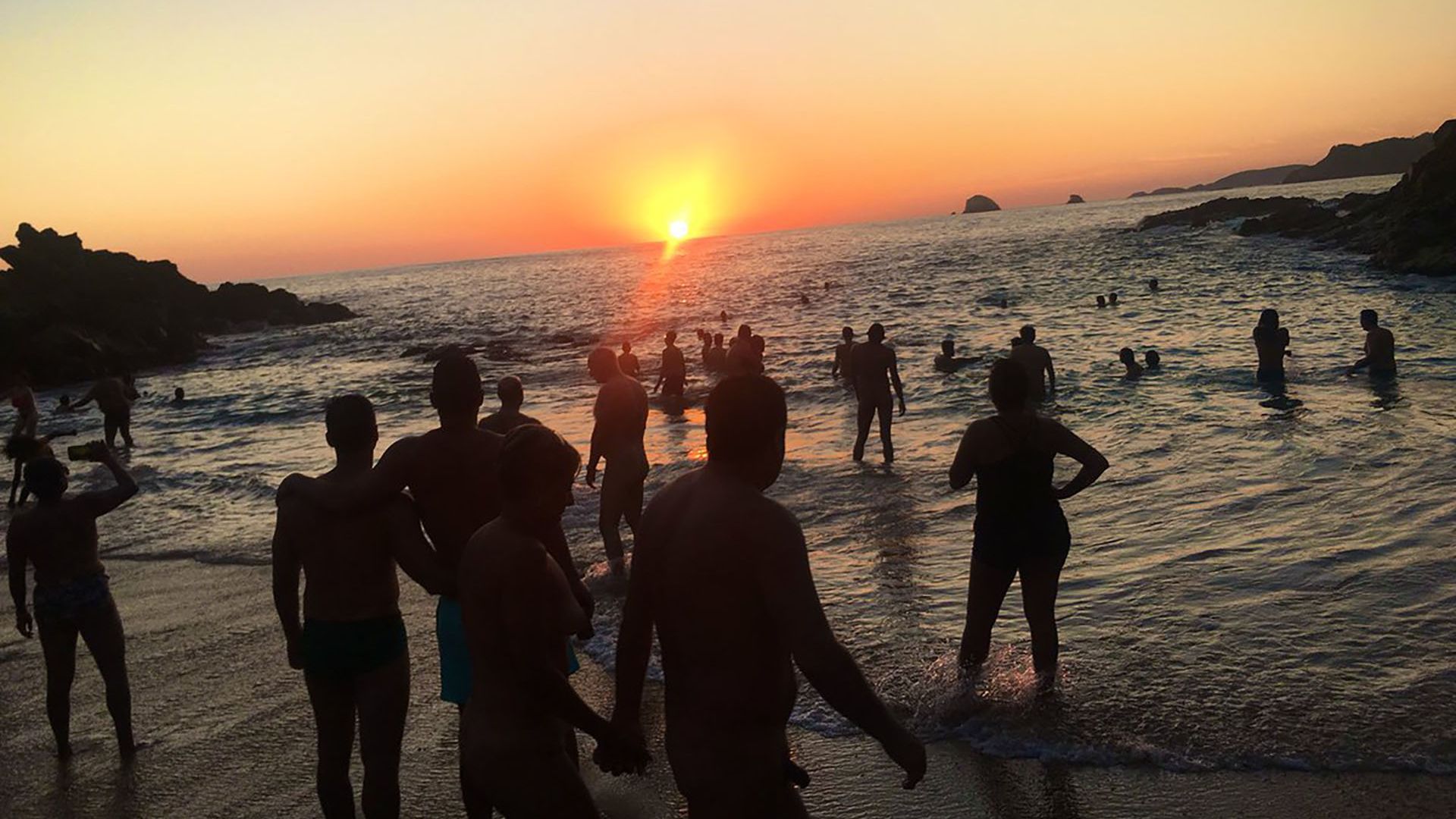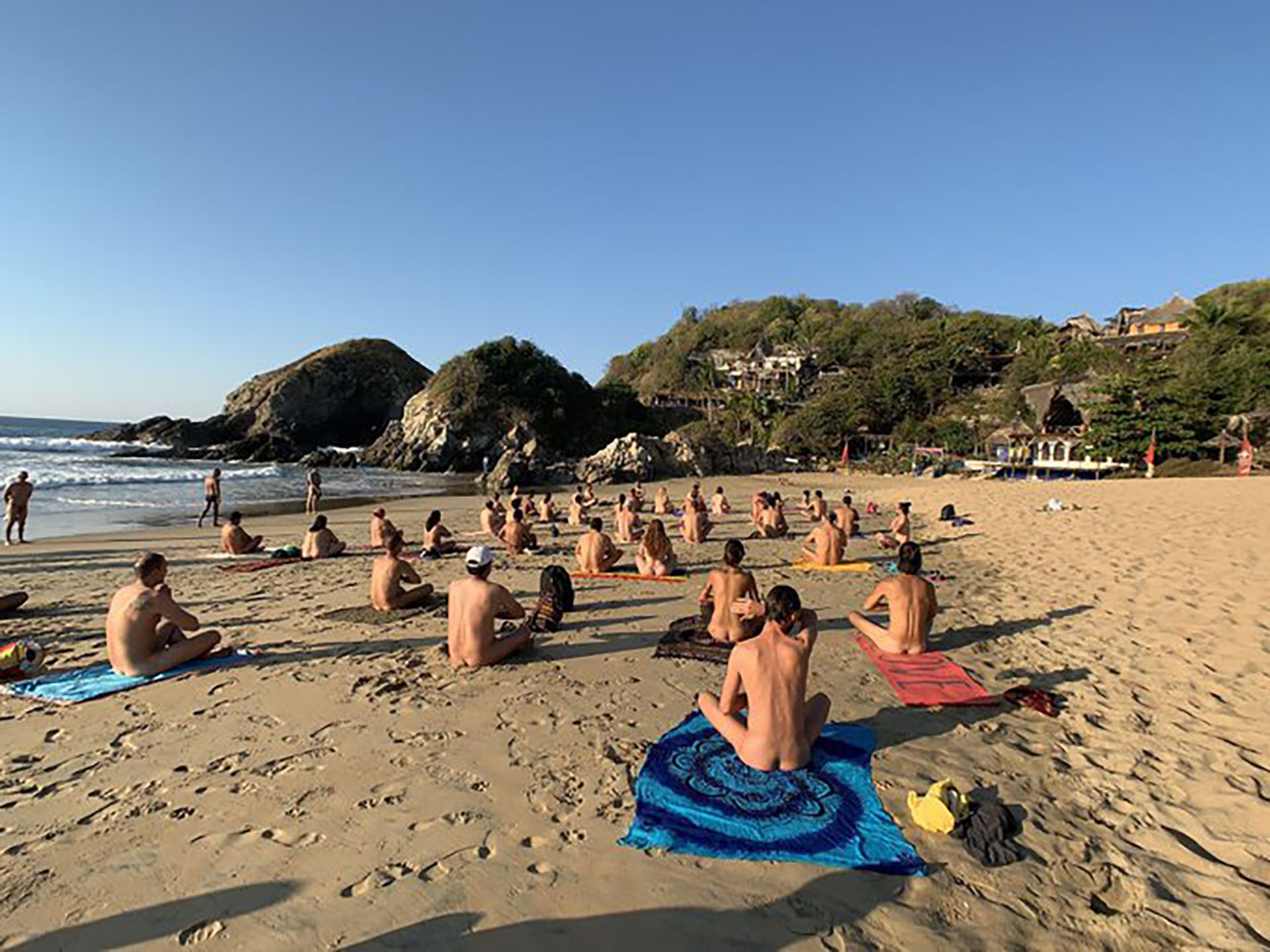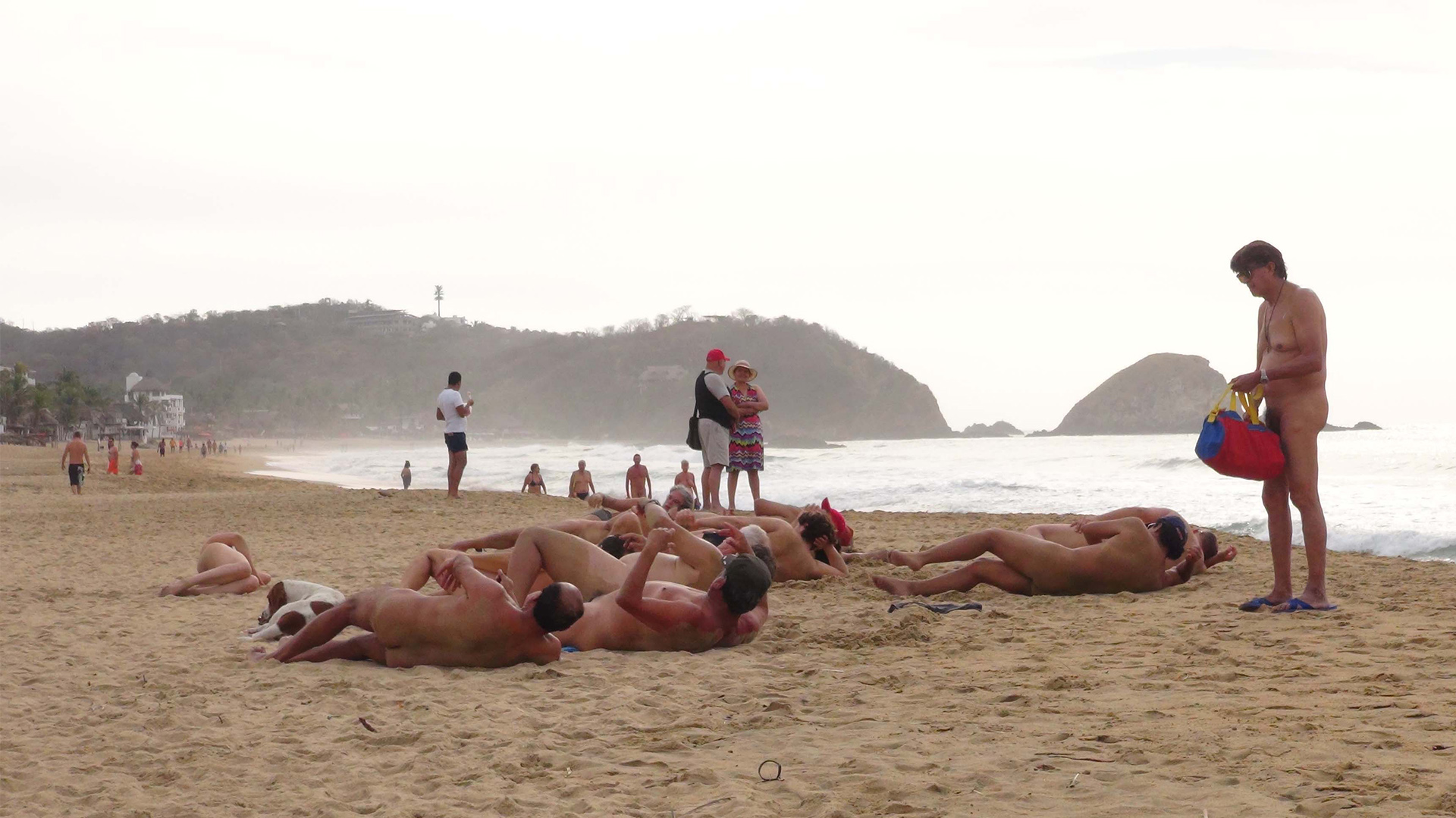Budget, Backpackers, Surfers, Beach Lovers, Naturalist, Hippie, Sun and Sand worshipers, Off the Beaten Path Paradise! Everyone is welcome at Zipolite!
Translate
A little about Playa Zipolite, The Beach of the Dead . . .
Playa Zipolite, Oaxaca, Southern Mexico, on the Pacific Ocean. A little bit about my favorite little get-away on this small world of ours.Zipolite, a sweaty 30-minute walk west from Puerto Angel, brings you to Playa Zipolite and another world. The feeling here is 1970's - Led Zep, Marley, and scruffy gringos.A long, long time ago, Zipolite beach was usually visited by the Zapotecans...who made it a magical place. They came to visit Zipolite to meditate, or just to rest.Recently, this beach has begun to receive day-trippers from Puerto Angel and Puerto Escondido, giving it a more TOURISTY feel than before.Most people come here for the novelty of the nude beach, yoga, turtles, seafood, surf, meditation, vegetarians, discos, party, to get burnt by the sun, or to see how long they can stretch their skinny budget.I post WWW Oaxaca, Mexico, Zipolite and areas nearby information. Also general budget, backpacker, surfer, off the beaten path, Mexico and beyond, information.REMEMBER: Everyone is welcome at Zipolite.ivan
Zipolite Blog Links
- Playa Zipolite
- Zipolite Entertainment, Party, Sports, Dance, Clubs, Music - - - Zipolite Entretenimiento, Fiesta, Deportes, Baile, Discotecas, Música
- Zipolite Food, Drink, Sunrise, Sunset - - - Zipolite Comida, Bebida, Amanecer, Atardecer
- Zipolite Nudist - - - Zipolite Nudista
- Zipolite ... Rentals, Camping, Hammocks, Apartments, House - - - Zipolite ... Alquileres, Camping, Hamacas, Apartamentos, Casa
- Zipolite Tours - - - Tours en Zipolite
- Zipolite Transportation and Rentals, Taxis, Bike, Moped, ATV - - - Zipolite Transporte y Renta, Taxis, Bicicleta, Ciclomotor, Cuatrimotos,
- Zipolite Yoga, Relax, Meditation, Temazcal - - - Zipolite Yoga, Relax, Meditación, Temazcal
- Budget Backpackers Off The Beaten Path - - - Mochileros económicos fuera del camino trillado
- Just For Fun ... by iVAn - - - Solo por diversión... de iVAn
- Near Zipolite - - - Cerca de Zipolite
- Travel Mexico - - - Viajes México
- ALL Playa Zipolite Blogspot Dot Com - - - TODO Playa Zipolite Blogspot Dot Com
Thursday, April 14, 2022
This is how the nights of "EL SHOW" are lived, full of colors and beautiful people! ❤️🧡💛💚💙💜
MÉXICO Alt Audio Content Escuchar artículo Zipolite: el paraíso de libertades amenazado por la gentrificación La reciente prohición del cruising y las cada vez más frecuentes llegadas en masa han generado una serie de restricciones que revienta la burbuja paradisiaca que ha caracterizado a la playa oaxaqueña
Zipolite: the paradise of freedoms threatened by gentrification
The recent ban on cruising and the increasingly frequent mass arrivals have generated a series of restrictions that burst the paradisiacal bubble that has characterized the Oaxacan beach.
| Zipolite: el paraíso de libertades amenazado por la gentrificación - Infobae Zipolite es un de las más atractivas playas del Pacífico mexicano, en Oaxaca. ... una de las agrupadas en la localidad oaxaqueña de Zipolite, ... |
Escuchar artículo
Zipolite: el paraíso de libertades amenazado por la gentrificación
La reciente prohición del cruising y las cada vez más frecuentes llegadas en masa han generado una serie de restricciones que revienta la burbuja paradisiaca que ha caracterizado a la playa oaxaqueña

Desde hace décadas, la Playa del Amor, una de las agrupadas en la localidad oaxaqueña de Zipolite, se ha caracterizado por ser una paradisiaca cala cuya principal bandera ha sido la libertad. Es un lugar nudista. Es LGTBQ friendly. Prácticamente, han descrito sus conocedores, no hay nada que no se pudiera hacer ahí. Pero como en todo, hay un límite. Y a medida que se corrió la voz de ese oasis libre de prejuicios -en un país en el que eso resulta casi utópico-, empezaron a llegar cada vez más visitantes, tanto nacionales como extranjeros. La gentrificación que eso supone ha resultado en el inicio de restricciones en el lugar que presumía de no temer una sola.
Según cuenta una leyenda urbana, en los años sesenta hubo un eclipse total de sol, por lo que la gente se congregó en esta playa que era totalmente virgen para observarlo. Mientras esto sucedía decidieron disfrutar de las aguas bajo la influencia de esa esencia hippie que se vivía al momento, es decir completamente desnudos.
“Durante décadas, este antiguo pueblo de pescadores convertido en un lugar de encuentro hippie se ha transformado en un oasis para la comunidad queer, atraída por sus playas doradas, su ambiente contracultural y una práctica del nudismo que abarca cuerpos de todas las formas”, describe sobre ese lugar un artículo del New York Times publicado este miércoles. “Pero a medida que su popularidad ha ido creciendo, atrayendo a un número cada vez mayor de visitantes homosexuales y heterosexuales, la ciudad está empezando a transformarse: los extranjeros están acaparando terrenos, los hoteles se multiplican, los influentes acuden en masa a la playa, y muchos residentes y visitantes temen ahora que lo que una vez hizo mágico a Zipolite pueda perderse para siempre”, repone el texto.

Y es que la ilusión de ese paraíso sufrió un fuerte golpe de realidad el pasado febrero, cuando los habitantes de la localidad acordaron frenar las libertades en la playa nudista con la finalidad de “recuperar formas de convivencia más armónicas entre residentes y turistas”, y no perder el reconocimiento internacional que como destino se han ganado.
Eso luego de que los locales empezaran a quejarse de la aparición de residuos en el mar, como condones usados, inhaladores conocidos como poppers, latas de cerveza o ropa interior. También las denuncias señalaban exceso de ruido por la noche y prácticas sexuales en la Playa del Amor.
Entoonces, la asamblea de los pobladores decretó delimitar un espacio exclusivo para el nudismo, con lo que prohiben que las personas se paseen sin ropa en lugares públicos fuera de dicha playa. Además dejaron estrictamente prohibido las pr{acticas sexuales en cualquier lugar público de la localidad.
La amenaza de la gentrificación
Hasta 2019, en las playas de Zipolite, donde es común realizar diversas actividades, desde bucear, surfear, practicar buceo y adminrar la caída del sol en el horizonte, el hospedaje solía ser económico, con una oferta que iba una pequeña cabaña hasta una habitación sencilla y rústica, desde 250 a 350 pesos (15 a 18 USD) por noche. Ahora, una suite frente al mar puede costar hasta 500 dólares por noche.

“El pueblo, donde el turismo está en auge, los recursos naturales son escasos y tantos extranjeros están comprando propiedades, que el precio de los terrenos se ha vuelto en gran medida inasequible para los habitantes locales”, advirtió el New York Times.
En ese texto también recogen el testimonio de varios visitantes asiduos a Zipolite y sus playas que apuntan varios aspectos en los que la gentrificación del lugar est{a afectando su esencia. Uno de ellos es el inexitente estigma de la imagen corporal. Y es que aseguran que mientras hace unos años nadie parecía inmutarse por las diferencias en los cuerpos de las personas que dejaban fuera sus inhibiciones al arribar al lugar, ahora esa diversidad ha quedado atrás.
“A medida que la popularidad de Zipolite ha crecido, su ambiente hippie está cambiando. Los bares son más ruidosos, los restaurantes se vuelven más ostentosos. El turismo LGBTQ también está cambiando: cada vez más dominado por los estadounidenses, se vuelve menos diverso”, apunta el texto.
This beach in Mexico is an LGBTQ haven. But can it last? - bdnews24.com bdnews24.com “Playa del Amor at sunset, the first time I saw it I truly felt like crying,” said Roberto Jerr, 32, who has been visiting Zipolite for five years. “ ...
| This beach in Mexico is an LGBTQ haven. But can it last? - bdnews24.com “Playa del Amor at sunset, the first time I saw it I truly felt like crying,” said Roberto Jerr, 32, who has been visiting Zipolite for five years. “ ... |

